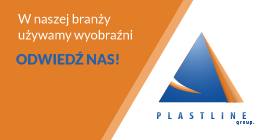The Human Power Team of Dutch cyclists won the 2012 World Human Powered Speed Challenge (from 10 September to 15 September) with the Velox 2. This lightweight, aerodynamic velomobile was developed in partnership with DSM whose extensive knowledge and expertise in materials, health, and nutrition was crucial to the team’s success. A vital component of the Velox 2 was the drive-train incorporating DSM’s Stanyl®, a high-performance polyamide 46 which helped give the Human Power Team the edge they needed to win.
To reach record speeds with human-powered transport, you not only need the right cyclist, you also need the best vehicle. A velomobile is a recumbent bicycle with a streamlined shell and with the right combination of aerodynamic design and a strong drive-train, it can reach speeds in excess of 100 km/h. That is why the Human Power Team, consisting of students from both the Delft University of Technology and VU University Amsterdam in the Netherlands, partnered with DSM in the development of their velomobile Velox2.
Chains and sprockets featuring Stanyl®
Consisting of sprockets and chains, the drive-train transmits the power of the rider to the wheels. When aiming for high speeds, it is critical to have a strong, efficient chain. It has to be strong to withstand the force exerted by a trained cyclist, and efficient to transfer as much of this power to the wheels. As a result, the Velox 2 used chains and sprockets made with DSM’s Stanyl®, a high performance polyamide, instead of steel. Chains and sprockets made with Stanyl are not only lighter, they also move with less friction which translates into greater speed. They were first developed for the Dutch cyclists competing in the London 2012 paralympics and were then used by the Human Power Team during their attempt to win the Human Powered Speed Challenge 2012 and to break the world speed cycling record.
Harry Siepel, Application Innovation Manager at DSM said: “Chains and sprockets made from Stanyl® are an important materials innovation benefiting both competitive and recreational cyclists. The combination of reduced friction and low weight gives cyclists a more efficient and quiet alternative to metals. The resulting added power can make the difference at the finishing line. What’s more, it makes oil lubrication and squeaking chains things of the past.”
Strong, ultra-light and sustainable
In addition to the drive-train, DSM also made other important contributions to the design of the Velox 2. The ultra-light and self-supporting shell was made from DSM’s Palapreg® ECO P55-01, a polyester resin composed of 55% bio-renewable raw material. Together with experts from DSM who work with it on a daily basis for applications in the automotive market and elsewhere, the team managed to build a shell that was highly aerodynamic.
To reduce development time and costs, DSM, as stereolithography solutions leader, also gave the team access to its Somos® materials. This wide range of resins is used for research and development in areas such as automotive and motorsports, medical and aerospace industries. The experts who work with it on a regular basis helped the team produce a number of structural components for the Velox 2, such as the camera casing and air-inlets.
As a final step, the team used PeptoPro®, DSM’s proprietary protein hydrolysate for fast recovery after their training and race sessions. Originally developed specifically for athletes participating in the Olympic Games in Athens 2004, it is now used by sports enthusiasts worldwide.
Aiming for the top spot
During the 2012 World Human Powered Speed Challenge, the Velox 2 was put through its paces and the team were aiming to both win this year’s event and break the world record. During the first few days the safety attributes of the canopy were put to the test. A puncture while going nearly 120 km/h meant that the rider lost control, swerved off the road and crashed into the surrounding desert. However, due to the strong shell absorbing the impact, the rider escaped unharmed while the bicycle was replaced with an exact copy.
With their attention again fully focused on the challenge, the team started churning out impressive results. Gradually increasing their top speed during each run, they finally achieved a top speed of 128 km/h. This ensured they were named as winners of the 2012 World Human Powered Speed Challenge, beating 17 other teams taking part across different categories. While this was of course a proud achievement, it means the team missed out on breaking the world record. This record continues to stand as both an inspiration and a challenge for others to develop a bicycle that can achieve this speed through an innovative design that may serve as an example for more sustainable developments in transportation.
DSM - Bright Science. Brighter Living.™
Royal DSM is a global science-based company active in health, nutrition and materials. By connecting its unique competences in Life Sciences and Materials Sciences DSM is driving economic prosperity, environmental progress and social advances to create sustainable value for all stakeholders. DSM delivers innovative solutions that nourish, protect and improve performance in global markets such as food and dietary supplements, personal care, feed, pharmaceuticals, medical devices, automotive, paints, electrical and electronics, life protection, alternative energy and bio-based materials. DSM’s 22,000 employees deliver annual net sales of around €9 billion. The company is listed on NYSE Euronext. More information can be found at
www.dsm.com.


